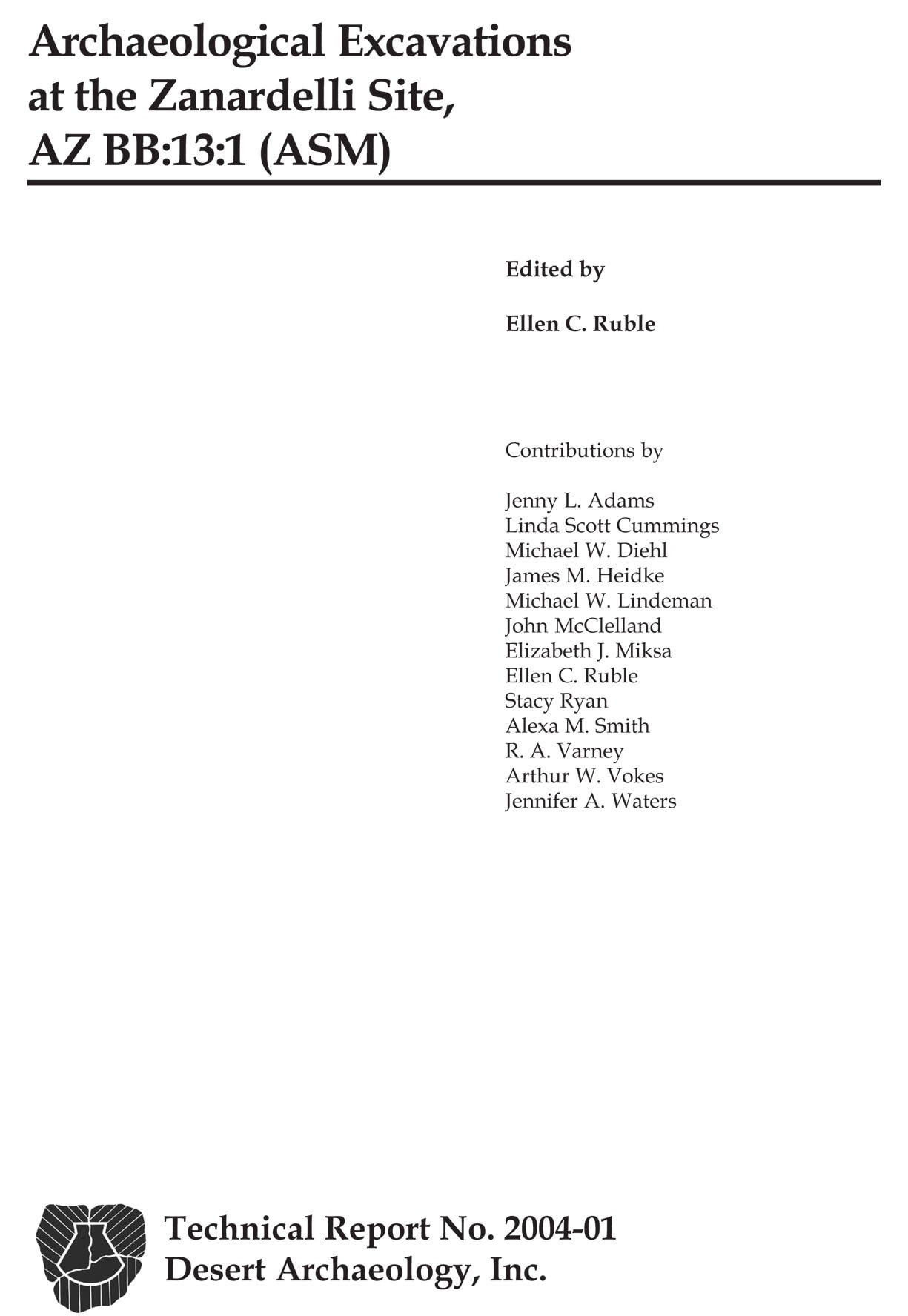Description
Archaeological Excavations at the Zanardelli Site, AZ BB:13:1 (ASM) (TR04-1)
Edited by Ellen C. Ruble
Contributions by: Jenny L. Adams, Linda Scott Cummings, Michael W. Diehl, James M. Heidke, Michael W. Lindeman, John McClelland, Elizabeth J. Miksa, Ellen C. Ruble, Stacy Ryan, Alexa M. Smith, R. A. Varney, Arthur W. Vokes, Jennifer A. Waters
In this report, the results of archaeological data recovery at the Zanardelli site, AZ BB:13:1 (ASM), south of Tucson, Pima County, Arizona, are detailed. The archaeological work was done in advance of a City of Tucson water project. Observations recorded by A. V. Kidder on a 1934 site card note that a great house with small mounds in close association were present at Zanardelli. Kidder also noted that the site was “Cut through by highway and mostly destroyed.” While little evidence of the adobe compounds or platform mound remains today on the surface of Zanardelli, excavations in the narrow right-of-way proved productive. Pit structures, surface adobe rooms, extramural pits, and burials have survived modern disturbances in the area. The use of the project area may have begun during the Late Rincon phase (A.D. 1100-1150); however, most of the features encountered during the excavations date to the latter portions of the Tanque Verde phase (A.D. 1150-1300) and beginning of the Tucson phase (A.D. 1300-1450). The work at Zanardelli provides insights into the lives of the people who lived at the village. The farmers who inhabited Zanardelli grew maize and cotton in the floodplain while also making extensive use of a wild resources. Their farming activities extended to the vast rock-pile fields east of the site, where they tended fields of agave, nurtured in the carefully placed rock piles. The resources grown in the fields, upland and floodplain, both fed and clothed the inhabitants of Zanardelli. Evidence gathered from the excavations suggests they were actively spinning and making textiles with cotton and agave. Some of this may have been exchanged with people living in other villages.
222 pages, 44 figures, 76 tables
